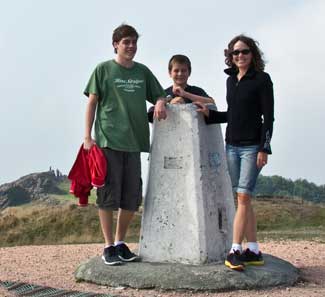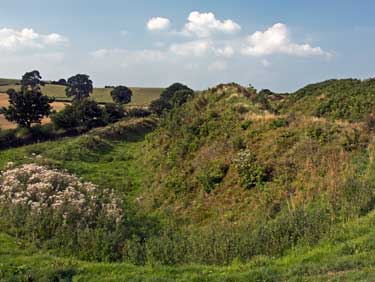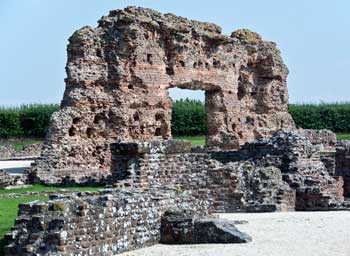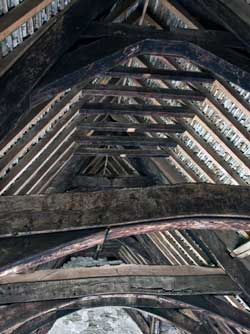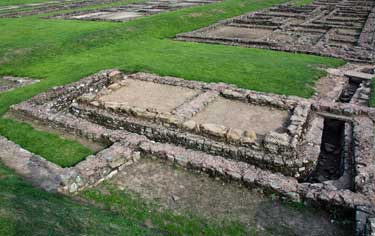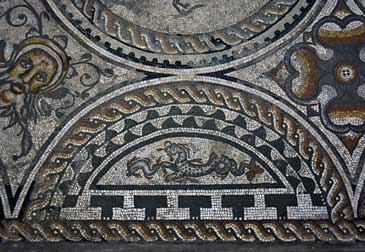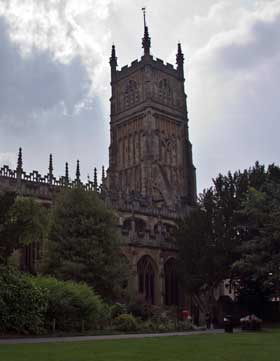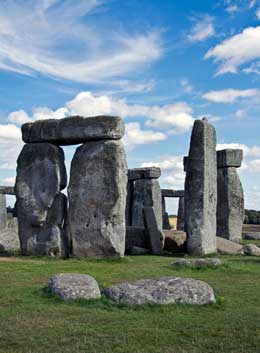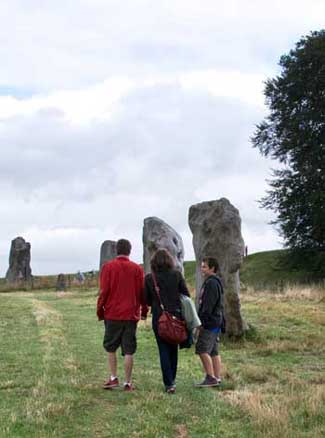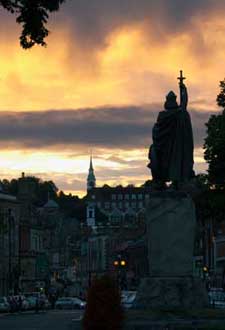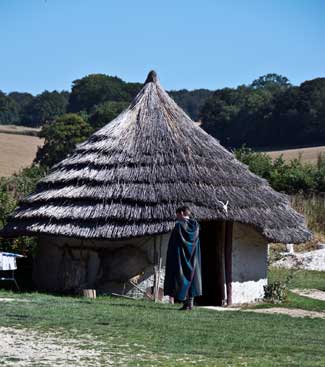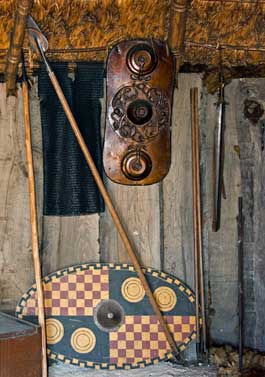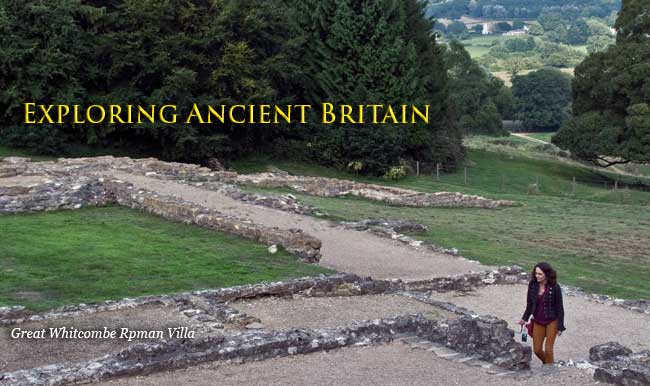
In the Spring of 2013 Cathy Marie Buchanan (The Painted Girls; The Night the Falls Stood Still) asked us to organize an August 2013 research trip to England to explore the physical setting of her next novel, which is set in the time of the Roman Conquest. We began our explorations in 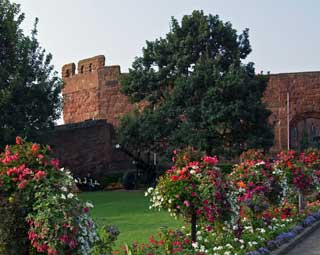 Shrewsbury so that we could to explore the some of the countryside that figures large in the narrative.
Shrewsbury so that we could to explore the some of the countryside that figures large in the narrative.
Ever since the Middle Ages, Shrewsbury has served as an important market place, serving both sides of the border between England and Wales. Its annual flower show, held every August, is reputed to be the oldest of its kind in the world and is certainly one of the most important. Shown right is Shrewsbury Castle decked out in floral array.
Shropshire
The Wrekin
One of the most impressive landmarks in Shropshire, one that dominates the entire region, is the Wrekin. During the Iron Age, it was the site of an important hill fort and was the chief centre of the Cornovii tribe. The contours of the ancient ramparts are clearly visible at the summit in the photograph below left.
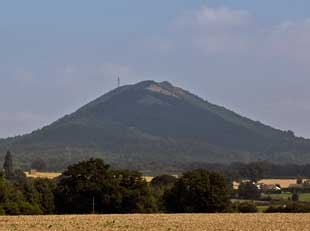
|
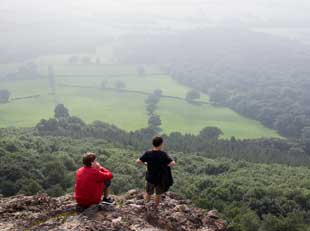
|
From the top, it is easy to see why the Cornovii chose it—it commands spectacular views of the surrounding countryside and controls the upper reaches of the Severn River as well as the land routes into Wales. Control of it was vital to any invading army and the Romans were quick to secure it.
The remains of the old hill fort are not so obvious as you walk over them but similar defences can be found at Old Oswestry, some 30 miles to the northwest. Hill forts at that time generally consisted of a dozen or so acres (about 5 hectares) surrounded by multiple walls and deep ditches that made them formidible obstacles to most attacking forces but the Romans would have made short work of them. At Old Oswestry the ramparts are much eroded and the material was washed down the slopes to fill the ditches. Even so, they still quite impressive.
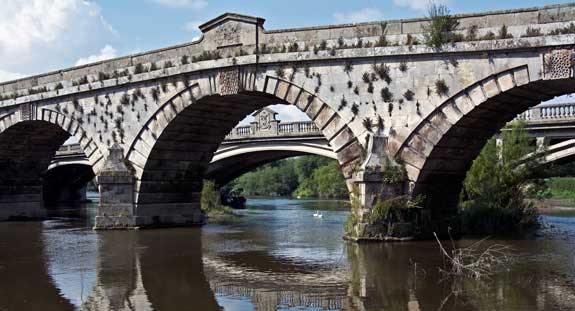
Bridges over the River Tern at Attingham Park
Wroxeter
After they established their control over the region, the Romans destroyed the fortifications on the Wrekin and established a fortress just outside what is now the tiny village of Wroxeter, to serve as a base for the Legio XIV Gemina. After the suppression of the revolt of Boudicca—in no small part due to the efforts of the same XIVth—the site was turned over by the army for civilian use and a substantial settlement grew up there. Known as Viroconium Cornoviorum (a Latinized version of its its native name), at its height it probably had a population of about 15,000, making it the fourth largest civitas in Britain.
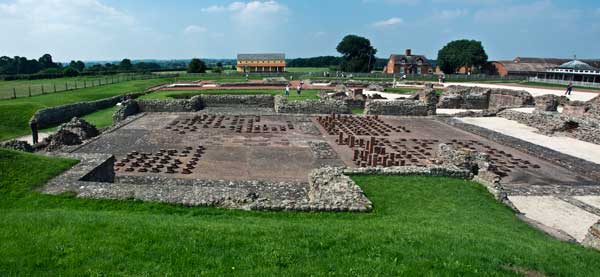
The Bath House at Wroxeter
Only some of the main civic buildings have been excavated at Wroxeter—part of the forum. The most imposing structure is the Bath House, which stood right next to the forum. To any true Roman, the public bath house (thermae) was the most important place in town and the one at Wroxeter is very impressive. The photograph above shows brick pillars that supported the raised floor allowing hot air to pass underneath and heat the room—a system known as a hypocaust. To the left is the hot steam room (caldarium) with hot plunges set in alcoves to either side, while to the right is the tepidarium. The Old Work (right) is the highest Roman structure still standing in England and was the formal entrance to the Bath Complex. It led directly from the town hall (basilica) to the cold room (frigidarium).
Stokesay Castle
This castle, which Jack spotted from the backseat of the minibus heading south from Shrewsbury, was built in the 13th century and served to keep watch over the Welsh Marches in the reign of Edward I. As such, it was not particularly relevent to our mission but was definitely worth the stop.
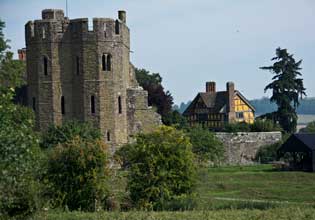 |
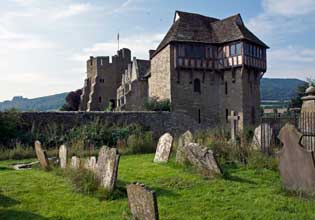 |
Two Views of Stokesay Castle
In fact, the building is not a castle per se but rather a fortified manor house—possibly the best preserved in England. What we see today is down to one Lawrence of Ludlow, a rich wool-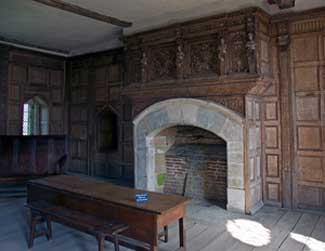 merchant who wanted to set up as a country gentleman and acquired the property in 1281. The presence of so many windows shows that military considerations were not paramount in his design. Tree-ring dating of the woodwork indicates that the building was finished within 10 years. The great hall has survived remarkably well and the timber framing of the ceiling is still intact after more than seven hundred years.
merchant who wanted to set up as a country gentleman and acquired the property in 1281. The presence of so many windows shows that military considerations were not paramount in his design. Tree-ring dating of the woodwork indicates that the building was finished within 10 years. The great hall has survived remarkably well and the timber framing of the ceiling is still intact after more than seven hundred years.
The only substantial remodelling of the castle took place in Stuart times when the private apartments ('solar') in the north wing were provided with some fine panelling and a half-timbered gatehouse was added. Shortly thereafter, during the Civil War, Stokesay was attacked by a Parliamentarian force and surrendered immediately—sparing the buildings from any further damage. After the Civil War it was occupied as a farmhouse and barn until the nineteenth century when it came into the possession of John Derby Allcroft who set about restoring it.
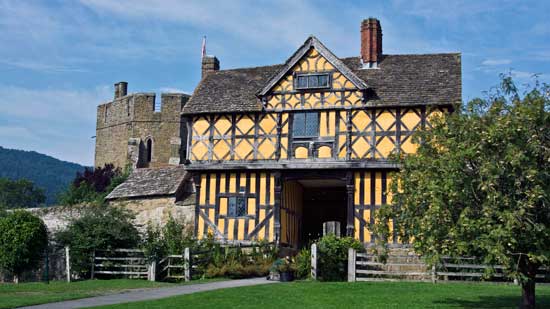
The Gatehouse at Stokesay Castle
Gloucestershire
From Shrewsbury we drove south along both sides of the Welsh border, heading vaguely towards Cirencester in the Cotswolds. The area was thrived during the Roman period and fine villas with delicate mosaic floors. Mosaics that once belonged to a Roman town house were found in what is now the parking lot of our B&B!
Caerleon
Caerleon, on the River Usk in South Wales. was the site of a major Roman fortress—Isca Augusta, built AD 75 as the headquarters of the Legio II Augusta commanded by the future emperor Vespasian during the invasion some thirty years before. It was essentially a typical marching camp made permanent by translating the wood and canvas to stone. Unfortunately, this has meant that the site was used as a quarry by later folk and little survives above ground level. Some of the original wall has suvived as well as the foundations of a number of barracks blocks. In one corner of the fortress was a set of latrines—Romans were certainly up front where their ablutions were concerned. Information for the curious can be found here: The Latrines at Housesteads
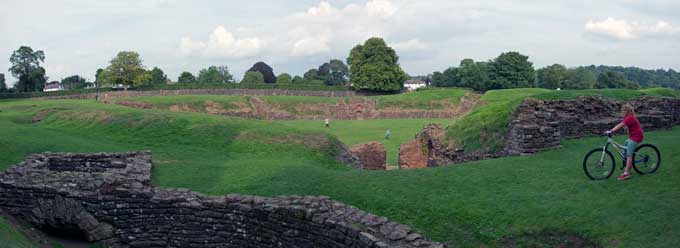
The Roman Amphitheatre at Caerleon
Just outside the fort are the foundations of what was a fairly large amphitheatre, easily capable of accomodating the entire garrison, as many as six thousand men in all. The remains of the military bath house were also uncovered and form part of the Roman Baths Museum.
Cirencester/Corinium
The town of Cirencester began life as a Roman fort, built in the territory of their allies, the Dobunni tribe. Named Corinium Dobunnorum, it became a very prosperous place, lying as it did at the intersection of three major Roman roads—Ermin Street, the Fosse Way and Akeman Street. It quickly grew to be the second largest civitas in Britannia (after London/Londinium). It's situation enabled it to continue to thrive throughout the long centuries since the Roman departure at the outset of the fifth century.
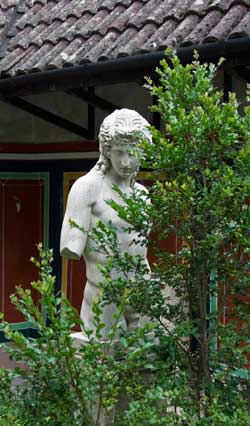
|
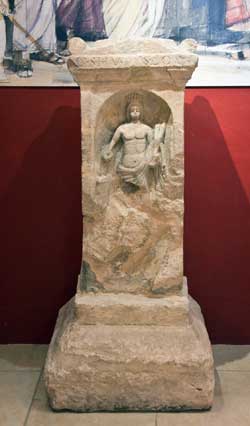
|
Unfortunately, apart from the remains of the amphitheatre and a stretch of the city walls, there is precious little to be seen as far as standing architecture is concerned. On the other hand, the Corinium Museum proved to be a rich source of information, with its displays of the many wonderful objects recovered from the town and vicinity, as well as its vivid recreations of everyday life.
Wiltshire
Stonehenge and Avebury
Wiltshire contains two of the most impressive prehistoric monuments in Europe. The more famous of them is Stonehenge, a UNESCO World Heritage Site. Unfortunately, with the current (and necessary) restrictions, the site is not all that accessible these days. At Avebury, which lies about 27 miles to the north, the site is entirely open to the public. In fact much of it is occupied by a small village complete with thatched cottages, parish church and public house.
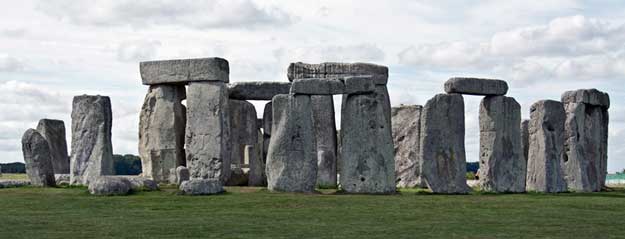
Stonehenge
In each case, the large standing stones (orthostats) were erected some 4,000 years ago, during what archaeologists call the Beaker Period, a time that marked the introduction of metal-working to the British Isles. At both too, the stones were but the latest additions to a site that had already been in use for many hundreds of years. The original monuments were roughly circular and were surrounded by a ditch and an earthen bank, a class of monuments known as henges.
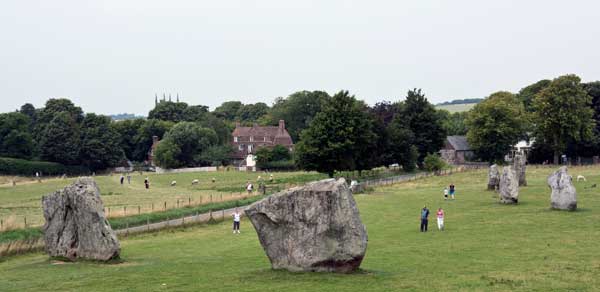
Avebury.The Southern Circle
Henges are peculiar to the British Isles and are not found on the continent. They don't seem to have been used as forts—the ditch is almost always found inside the bank which would entirely defeat its purpose. The evidence suggests that they served a variety of functions and that some were more specialized than others. People need to get together on a regular basis to exchange commodities and to cement social relationships. They took an enormous amount of effort to build—just carving out the ditch at Avebury involved the removal of 200,000 tons of chalk and would have taken something like 1.5 million man/hours—you do the math. The tools involved were simple picks—a flint blade mounted in an antler—with the shoulder bone of an ox to scoop the dirt away.
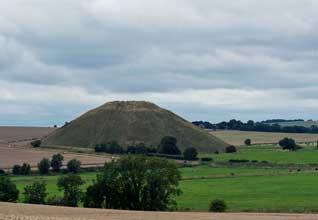
|
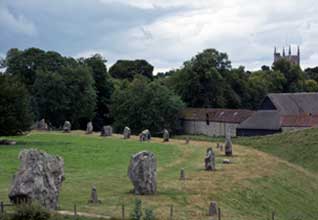
|
That pales in comparison with the expenditure of labour that went into the construction of the entirely man-made Silbury Hill which lies a little over a mile (1.5 km) away from Avebury, and required something like 10x the effort. Not bad, considering the builders were almost all teenagers or younger. There is no evidence to suggest that women were any less involved than the men.
Hampshire
Winchester
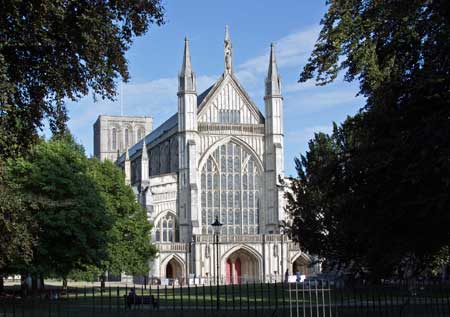
Winchester Cathedral
Hampshire was the heart of what later became England. The principal city, Winchester, was the capital of of Wessex during the reign of Alfred the Great in the 9th century. It became the capital of a united England during the reign of his grandson, Æthelstan and remained so until after the Norman Conquest. In Roman times it was known as Venta Belgarum ("market of the Belgae"), named after the local tribe. There are no less than three hill forts in the immediate vicinity, so its importance antedated the Romans.
Butser Ancient Farm
Butser Ancient Farm is an open-air archaeological museum near Petersfield. It was designed as a working Iron Age farm where archaeologists would be able to test their theories about prehistoric lifeways including such things as farming practices, building techniques and the use of space. The reconstructions are based on buildings excavated at a number of different archaeological sites such as Danebury hillfort, Glastonbury Lake and Moel y Gerddi
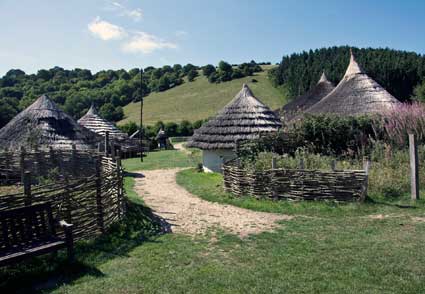
Reconstructed Village at Butser Ancient Farm
Butser proved to be a mine of information about how everyday life during the Iron Age and a fitting place to end the tour.
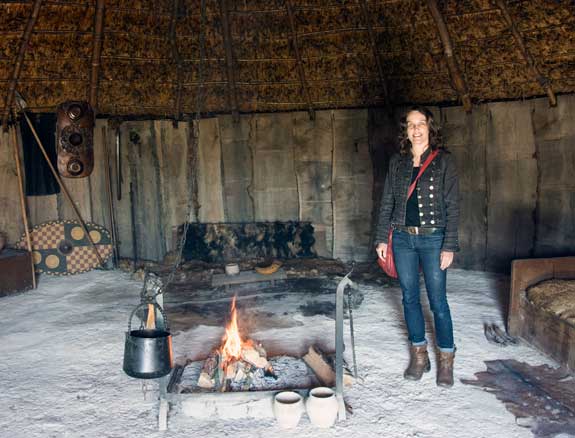
Cathy inside the reconstruction of one of the houses at Danebury hill fort
All of the objects and furniture in the above photo are based on examples recovered by archaeology or from contemporary descriptions. This goes for the hearth with its iron fire-dogs and cooking pot, the weapons on the wall—even the slippers next to the bed. The bed itself was modelled after a much earlier stone version found at Skara Brae. The original versions of the sword and ceremonial shield (far right) were found in watery contexts. The wooden shield is based on depictions in Roman art and the iron spearheads on finds from archaeological sites.
